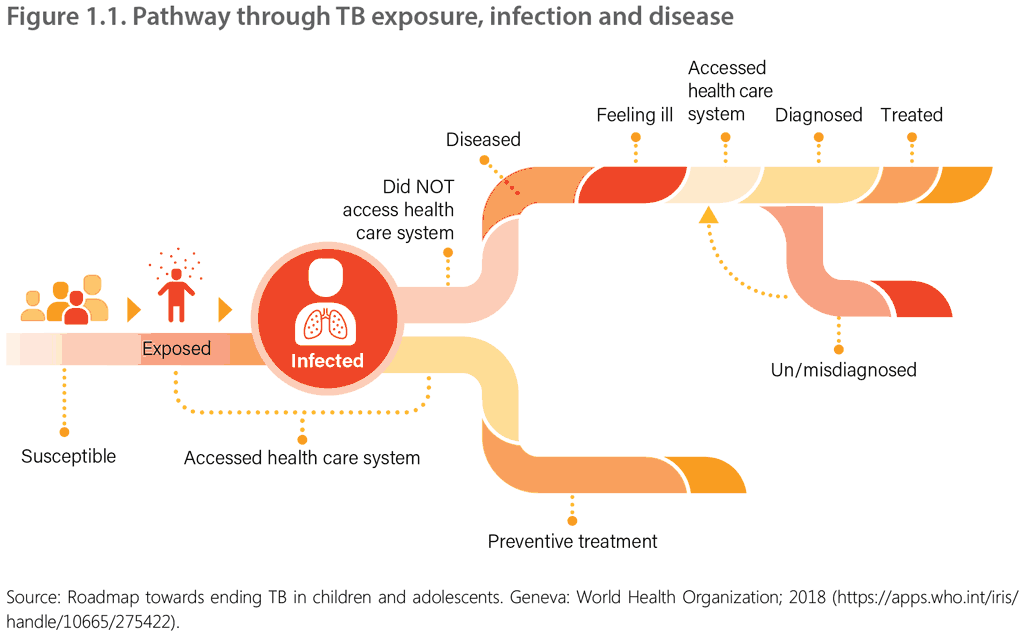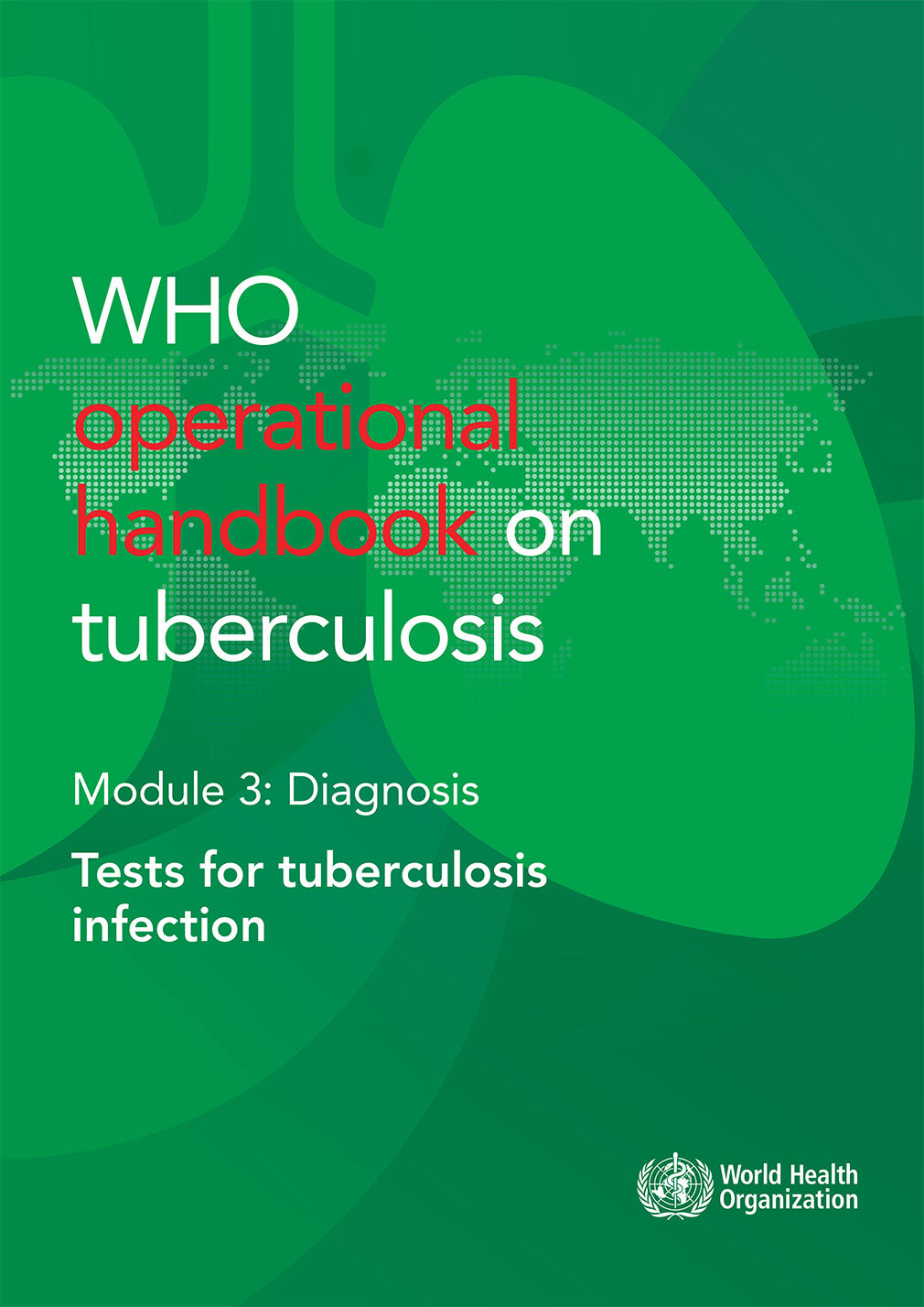Operational Handbooks
2.3.1.1. Symptom screening
Any child aged under 10 years who has had close contact with a person with TB disease should be screened for TB with a symptom screen or CXR as part of contact investigation. Symptoms used to screen for TB are cough for more than 2 weeks, fever for more than 2 weeks, and poor weight gain or weight loss in the past 3 months. In young children, reduced playfulness or lethargy should also be included, since prolonged cough may be absent in children with disseminated disease.
2.3 TB screening approaches in children and adolescents
Screening serves to identify children and adolescents who may have TB disease (presumptive TB) and who need further evaluation to make or confirm a TB diagnosis (see Chapter 4). It also helps to identify children and adolescents who are eligible for and could benefit from TPT. A screening test is not intended to be a diagnostic tool. People with positive results on a screening test should undergo further diagnostic evaluation.
7.6.1. Introduction
By reducing cell-mediated immunity, undernutrition increases the risk of TB, while the catabolic effect of TB disease results in weight loss and wasting, creating a vicious cycle (105, 228). Globally, about 45% of deaths in children aged under 5 years are attributable to undernutrition (228). Undernutrition may be acute or chronic and categorized as moderate or severe.
7.2.3. Management of asymptomatic neonates of mothers with TB
TB disease should be excluded in neonates born to women with presumptive or confirmed TB. The level of infectiousness and drug susceptibility in the mother should be determined. It is not necessary to separate the neonate from the mother. Breastfeeding should be continued and the mother advised to wear a surgical mask when close to the baby (191).
5.3.3.1. Dosing
In general, TB medicines should be dosed according to body weight. Dosing of bedaquiline and delamanid for children and young adolescents aged under 15 years was updated in 2021 following an expert consultation meeting convened by WHO. These dosing recommendations are included in Annex 6 and may be updated as evidence emerges, especially for the youngest age groups, for which there is very limited evidence.
5.3.1. Identifying children who should be treated for multidrug-resistant and rifampicin-resistant TB
Based on modelling estimates, between 25 000 and 32 000 children and young adolescents aged under 15 years develop MDR-TB disease annually (110). When treated, outcomes of children with MDR/RR-TB are good, with favourable outcomes in 78% (111) and over 90% in some cohorts (112). Despite these good outcomes, relatively few children are diagnosed and treated for MDR/RR-TB each year, with only 12 220 starting treatment between 2018 and 2020 (11% of the United Nations General Assembly High-level Meeting target of 115 000) (1, 9).
2.1 Introduction
About a quarter of the world’s population has been infected with Mycobacterium tuberculosis. The vast majority of these people do not have TB disease (10). It is estimated that 7.5 million children and young adolescents aged under 15 years are newly infected with M. tuberculosis each year (11). Cumulatively, about 67 million children and young adolescents aged under 15 years are infected with M.
1.5. Structure of the operational handbook
The chapters in the handbook are structured around the pathway of TB infection and disease in an individual child or adolescent and the interface with and retention across sequential stages of care (cascade of care), as shown in Figure 1.1 (5).

7.5 TB in children with severe acute pneumonia
TB is a common cause or comorbidity in children with clinically diagnosed pneumonia. A systematic review on TB in acute respiratory infection found that M. tuberculosis was identified in around 5–10% of children with pneumonia aged under 5 years in TB endemic countries (223). Limited data from clinical and autopsy studies suggest that TB was also associated with mortality in these children. Prevalence studies, including the multisite PERCH study (224), confirm these findings.
Pagination
- Previous page
- Page 70
- Next page
 Feedback
Feedback